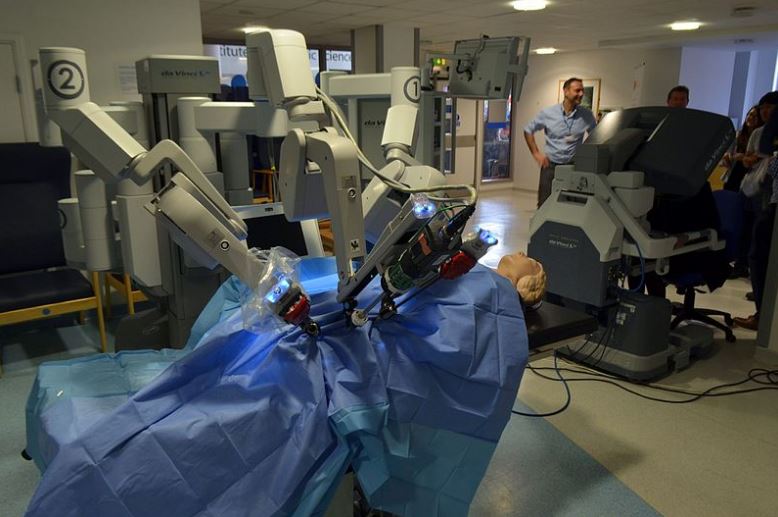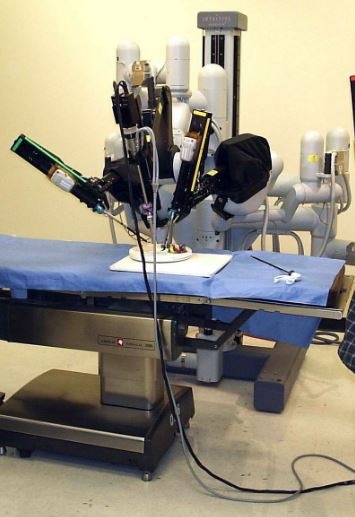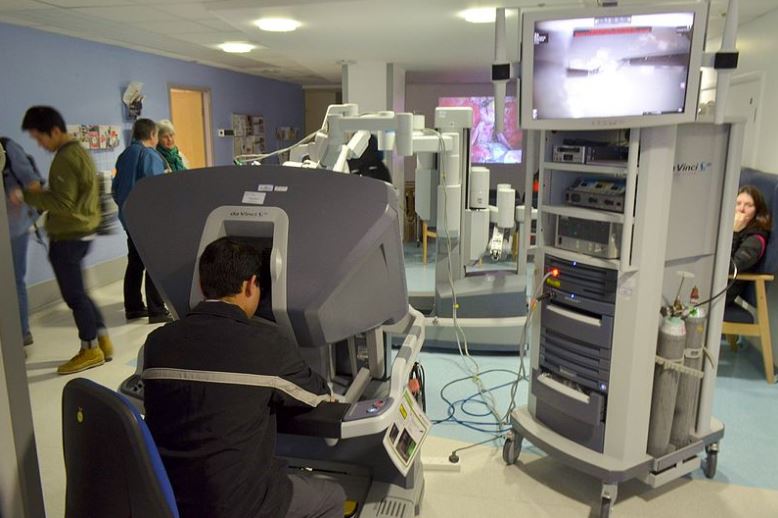Going to a surgeon for an operation is always coupled with fear and anxiety. The dreadful feeling on whether the surgery will be successful or whether you can manage the pain are some of the things that occupy a patient’s mind. However, as technology advances, the advent of robotic surgeons can provide a different experience for a surgical patient.
For example, in UCLA robotic surgery is presently done using the da Vinci™ surgical system, a different set of technologies that include specialized arms for holding instruments, a magnified screen, a console, and a camera.
“There’s been much discussion regarding robotics-assisted surgery, digitized surgery and telesurgery, including much to be celebrated,” said Asensus Surgical CEO Anthony Fernando.
He explained how surgery evolved with the development of robotics-assisted surgery, digitized surgery, and telesurgery.
According to Fernando, new types of augmented intelligence “allow robotic-assisted surgical platforms to perceive (computer vision), learn (machine learning) and assist (clinical intelligence) in surgery—providing a true digital surgical assistant for the first time.”
However, a 5G infrastructure must be readily available for robotics-assisted surgery, digitized surgery and telesurgery to reach their maximum potential.
“Robotic-assisted surgical practices, too, must be widespread for advancements to continue. But continue it will, and by extrapolating from current trends it is possible to predict the many ways that progress will take form,” said Fernando in Robotics Business Review.
Accordingly, robotic surgery technology “lets your surgeon see with enhanced definition, move more precisely, and better pinpoint the area of your body being treated.” These are some of the great options to consider robotic surgery.
“It also involves small, strategically placed incisions instead of the large ones typical of older techniques. These enhanced capabilities offer you greater safety and faster recovery,” said the MedStar Health, whose surgeons are highly trained and leading the steps in robotic surgeries.
Robotic surgery, or robotic-assisted surgery, is now the most cutting-edge medical technology.
The surgery involves the use of a robotic arm, some small tools, and a camera. A specially trained surgeon operates robotic arms from a viewing screen located in the same room as the operating table.
“But the viewing screen could be located far away, allowing surgeons to perform telesurgery from remote locations. The screen is part of what is referred to as a console, which allows surgical procedures to be performed from a seated position, while the surgeon views a magnified three-dimensional view of the patient’s surgical site,” medical writer Sherry Christiansen explained.
“Contrary to what many people believe about robotic surgery, it’s not actually performed by robots. Rather, the surgeon is continuously in complete control of the robotic arms. The robot serves as a tool and could be seen as an assistant of sorts to the surgeon, thus, the name, robotic-assisted surgery,” she added.
The History of Robotic Surgery
The technologies of robotic surgery have evolved for many years. A report from American Journal of Robotic Surgery said the first robot was used to perform a brain biopsy procedure in 1985. The first innovative robot was named PUMA 200 and Westinghouse Electric manufactured it.
However, the PUMA 200 model was already outdated with the launch of a modern robotic surgeon called da Vinci robot. This robot was introduced in the year 2000.
“The early de Vinci model was the first to be approved for general laparoscopic surgery (minimally invasive surgery of the abdomen or pelvis with the use of a camera). Since that time, the field of robotic-assisted surgery has exploded due to the drastic improvement in technology,” said Christiansen.
“Today’s robotic surgery technology has improved dramatically in its accuracy, imaging technology, range of motion, and more. The modern robotic technology has also been adapted for multiple surgical specialties such as neurosurgery (the brain, spinal column, and peripheral nerves), heart and lung procedures, ear and throat surgeries, and more,” she added.
Who should not avail of robotic surgery?
Unfortunately, robotic surgeons are not for everyone. Certain factors make robotic-assisted surgery not to be introduced to some people. These types of patients have the following conditions:
1. Obesity
According to Christiansen, fat tissue would obstruct the surgeon’s view of the surgical site. However, not all patients who are obese will automatically be disqualified, noting that surgical operation depends on specific anatomy, the type of procedure, and other factors.
2. Specific conditions or types of surgery
There are specific medical conditions where robotic surgeons cannot be used, like having plastic and reconstructive microsurgery.
It is because the particular technology required to do the plastic and reconstructive microsurgery procedures “has not yet been launched.”
“Today, the majority of the instruments used in robotic surgery are much too large and have not been designed to perform microsurgery on the delicate tissue involved in many reconstructive procedures,” wrote Christiansen in Very Well Health.
3. Contraindication or specific risk
There are certain situations in a patient that would result in a high risk of harm, thus robotic surgery is not applied.
4. Some types of comorbidity
Having more than one medical condition at a time does not warrant a patient to undergo robotic surgery.
What are common surgery types in robotic surgery?
Raynetta Stansil, Clinical Educator at Surgical Solutions, said that “more often than not, robotic surgery will be accomplished with the da Vinci Surgical System, which has received FDA clearance for use in several surgery types.” These surgery types include:
- Cardiac
- Colorectal
- General surgery
- Gynecology
- Head and neck
- Thoracic
- Urology
Prediction is surgical robots market
CEO Fernando of Asensus Surgical has come up with several predictions in the surgical robot industry. These are what he sees in the market:
- The global surgical robots market is projected to reach US $14.4 billion by 2026 from US $ 6.4 billion in 2021, citing market research firm MarketsandMarkets.
- The future of telesurgery with the availability of 5G and the widespread adoption of robotics-assisted technologies.
- The expansion of robotics-assisted technology moves into smartphone applications and games.
- Artificial Intelligence allows machines to work and react like humans (and potentially replacing humans).
- Modern surgical platforms and technology ownership models will continue to be introduced in the market.
- Increase in adoption of robotics-assisted technology in ambulatory surgery centers (ASCs).



